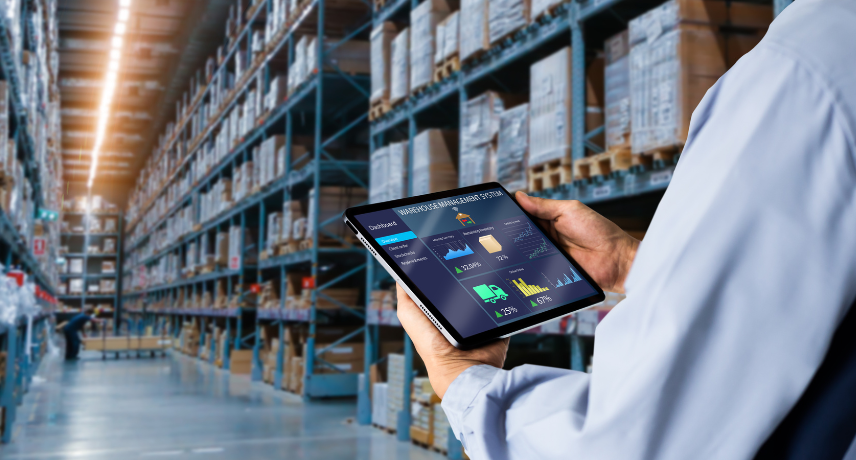
Enquiry Form
Is Your Inventory Out of Control Here's How Software Can Fix It
Inventory management can be a nightmare without automation; overstocks, understocks, misplaced units, and human error will result in considerable losses. When your inventory management system is not functional, you are likely to experience frequent delays in orders, stock mismatches, and backups in store. The great news? The appropriate inventory control software would allow you to regain control.
The article will also discuss the role of software solutions to improve your operations system, reduce expensive mistakes, and make your business sustainable.
The Hidden Cost of Poor Inventory Management
Ineffective inventory operations are not only a problem in your warehouse; they also have an impact on customer satisfaction, relations with your vendors, and the cash flow of your business. Poor accuracy of forecasting and excess stock holding are some common problems that usually lead to:
- Loss of sales on out-of-stock products
- Overstocked inventory eating up storage space
- Spoilage or obsolescence for perishable or tech products
- Manual entry errors leading to inventory mismatches
This is where inventory automation comes in.
What is Inventory Management Software?
Inventory management software is software that supports businesses by helping them to track, control, and automate inventory stock levels in various locations and points of contact. These kinds of systems integrate with your point of sale, your eCommerce, and your supply chain software to consolidate everything into a single source of truth.
It takes the guesswork out and provides you with real-time visibility into your stock, reorder point, and product movement so that you will never understock or overstock again.
1. Inventory Tracking in Real-Time
Companies today run through different sales channels—online shopping, retail shops, and wholesale. There is no way to monitor stock levels in real time without a centralized system. That is why the tracking of inventory in real time is the fundamental functionality of the majority of enhanced systems.
This is an inventory update feature since it will update your inventory data immediately as sales are made or stock is received. Point-of-sale software will enable you to know how much stock you have available at all places (be it one or ten).
2. Inventory Forecasting
One of the biggest reasons why inventories get out of control is lack of planning. The technique of projecting future sales using historical sales data, seasonal patterns, and market trends is known as inventory forecasting.
By forecasting properly, you will make better decisions on stocking, buying, and offering promotions without wasting your resources on peak times.
3. RFID and Barcode Scanning
Inventory counts are susceptible to mistakes. Integration of RFID code and barcode scanning helps limit these mistakes considerably, since they help to automate product identification and stock updates.
These devices enable your staff to receive shipments, scan inventory, and ship returns with a single scan and save time and improve accuracy in your warehouse activities.
4. Automated Reorder Point
Being out of stock results in lower sales and unhappy clients. Automated reorder point prevents this ever. The applications keep track of your stocks, and when they reach a predetermined level, purchase orders are automatically generated.
This system ensures that your inventory can be restocked without having to do it manually.
5. Multi-Channel Inventory Management
When you sell on Amazon, Shopify, Flipkart, or in retail stores, it is necessary to maintain the consistency of the inventories across all these platforms. Multi-channel inventory management will allow you to align your stock information across all channels in real time.
This gets rid of overselling and realizes that product stocks are up-to-date wherever your customers shop.
6. Inventory Optimization
The technique of balancing stock to satisfy demand without making excessive inventory investments is known as inventory optimization. Advanced inventory software will generate recommendations on optimal stock levels with the help of machine learning and allow you to optimize holding costs and maximize the flow of cash.
7. Warehouse Management Integration
Inventory management is only a portion of the problem; the efficiency of the warehouse is also part of it. Find software with integration with warehouse management systems that will help in streamlining the process of storage, picking, and packing.
This integration enhances the warehouse layout, cuts down the fulfillment time, and makes timely deliveries.
8. Inventory Reporting and Analytics
You cannot measure what you cannot improve. Inventory reporting and analytics will provide you with information on the services of the products, their turnover rates, deadstock, and the supplier lead times.
Such reports allow locating slow-selling goods and analyzing inefficiency in your purchasing/completing the process.
9. Cloud-Based Accessibility
Today, teams have become remote, distributed, and mobile. With cloud inventory software, you can manage your inventory from any device, at anytime, anywhere.
With real-time sync and remote access, the team always stays informed and in control—no matter if they’re in the office or on the warehouse floor.
Conclusion:
When the inventory is not under control, then it is time to improve the operations by investing in good future-proof inventory management software. Real-time tracking, automated reorder point, and more—the right solution can make a massive difference in how your company operates, making it more accurate, time-saving, and profitable.
Stop using spreadsheets and guesses. With such powerful tools as inventory forecast, barcode scanning, and multi-channel integration, you will have control back, minimize waste, and be able to meet the needs of the customers.